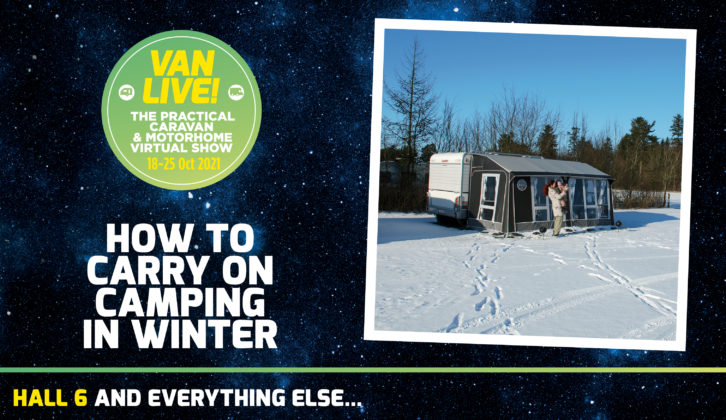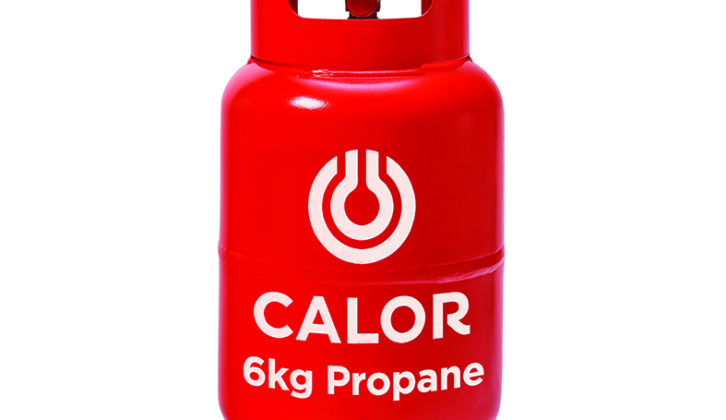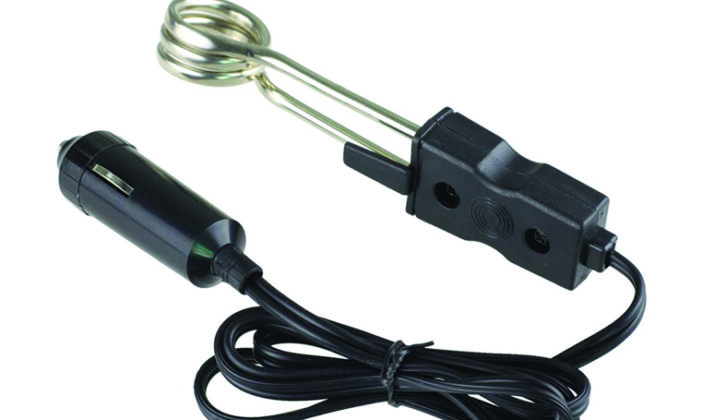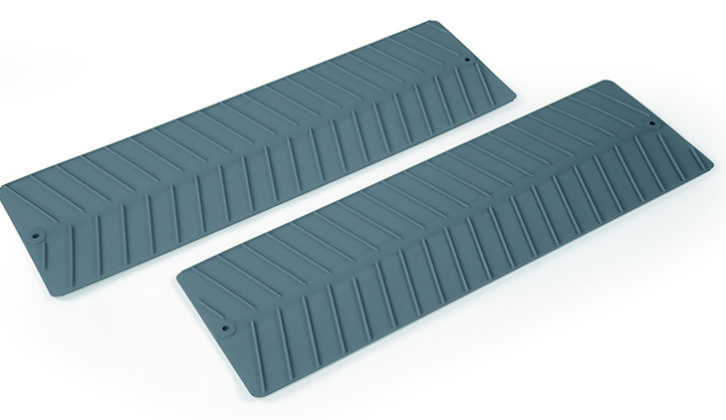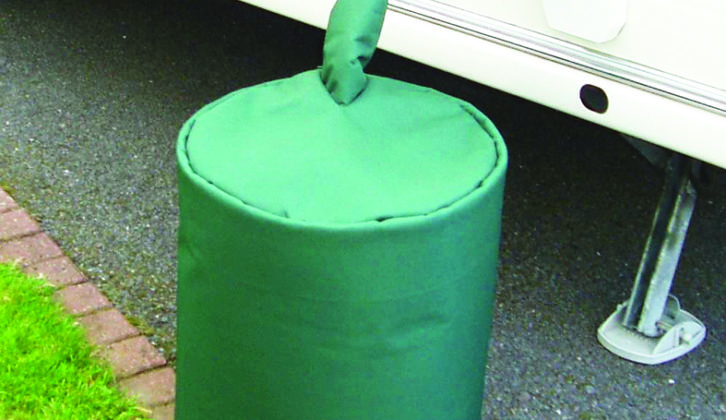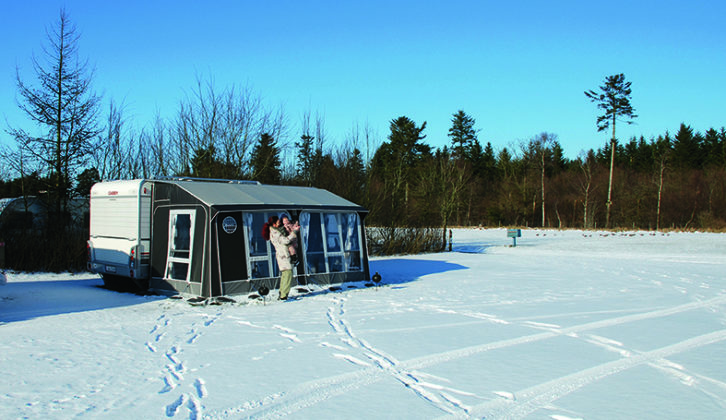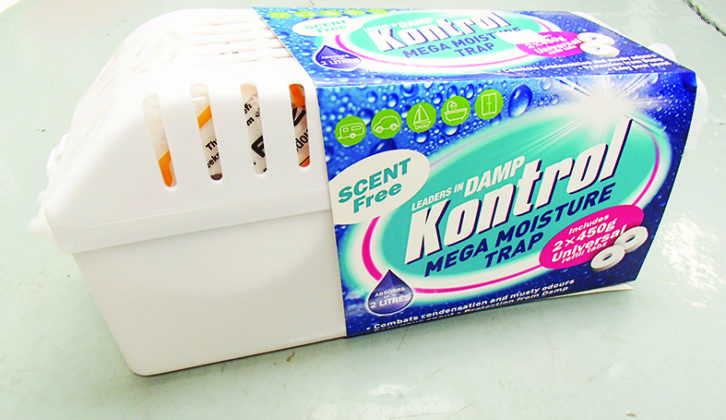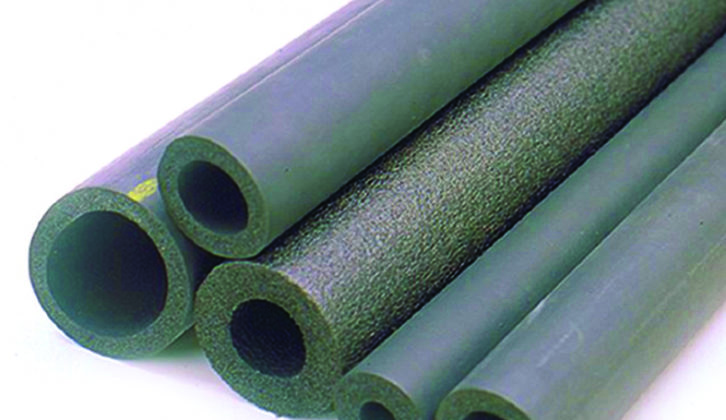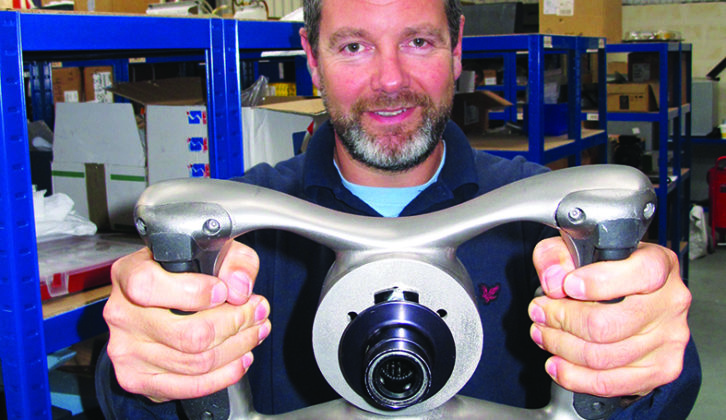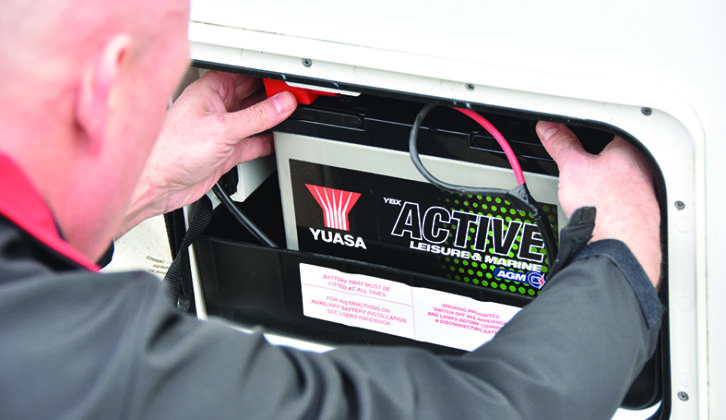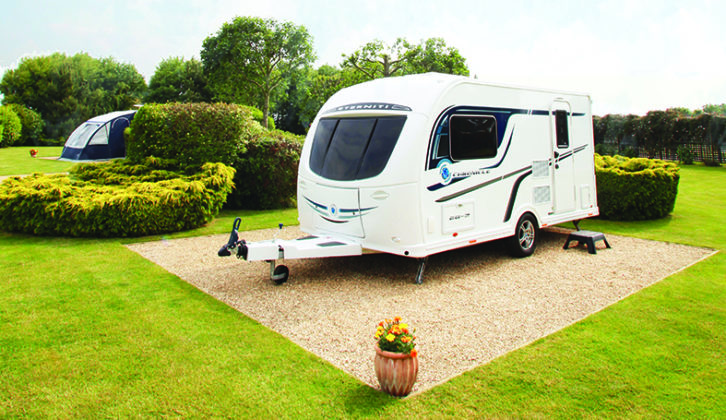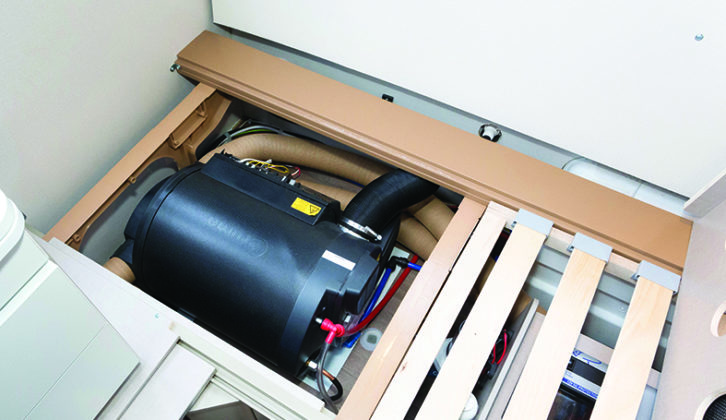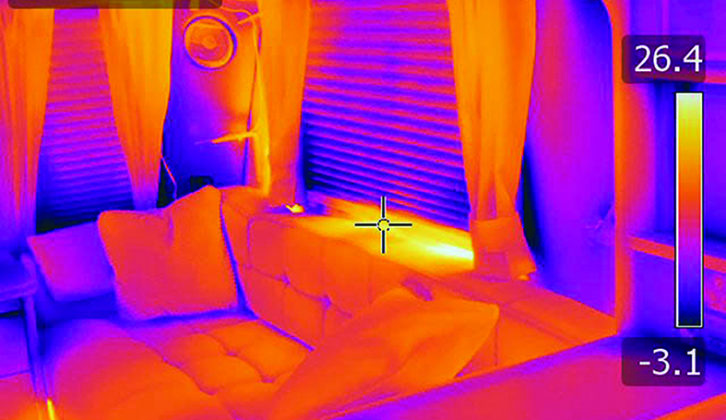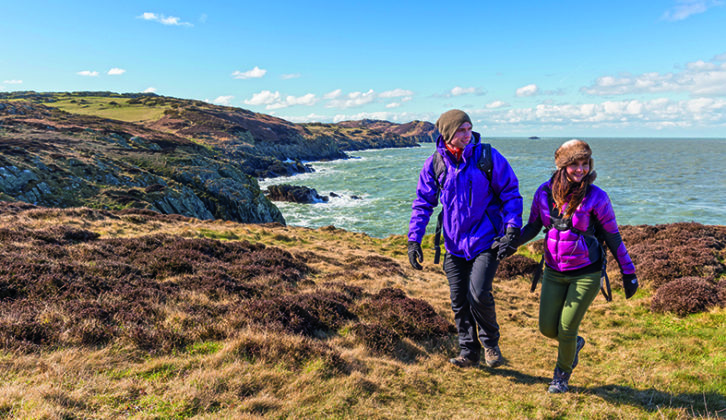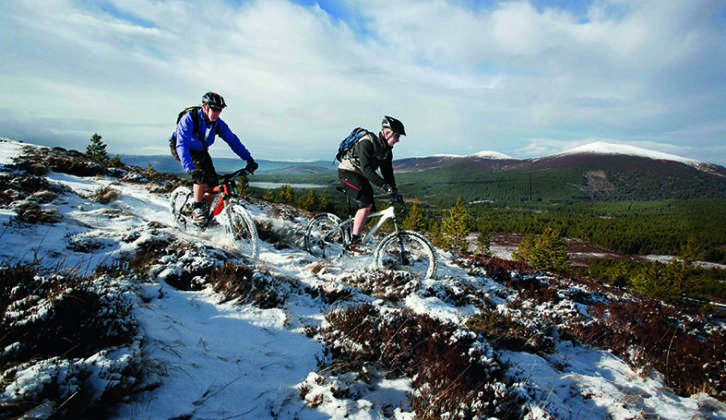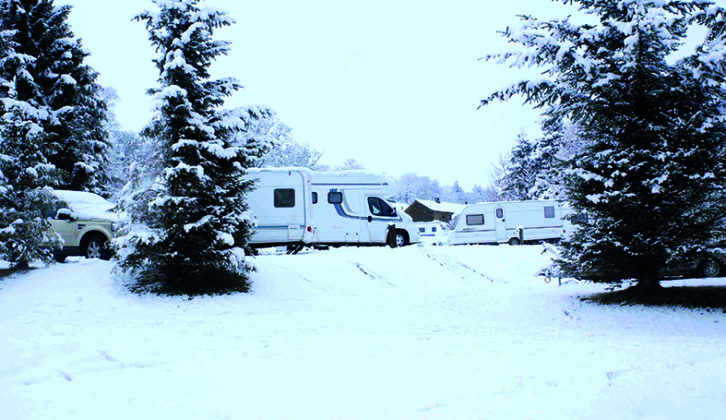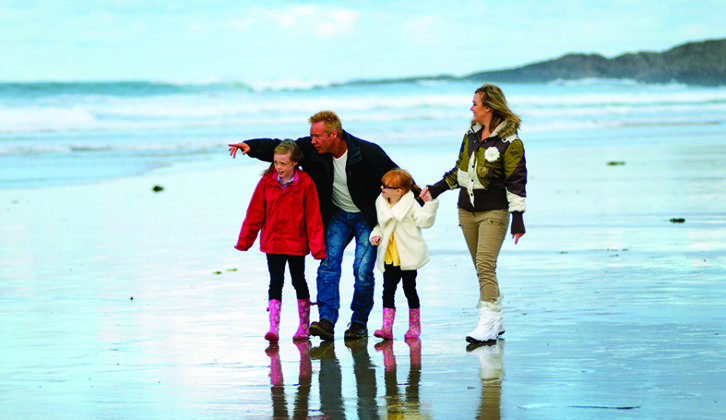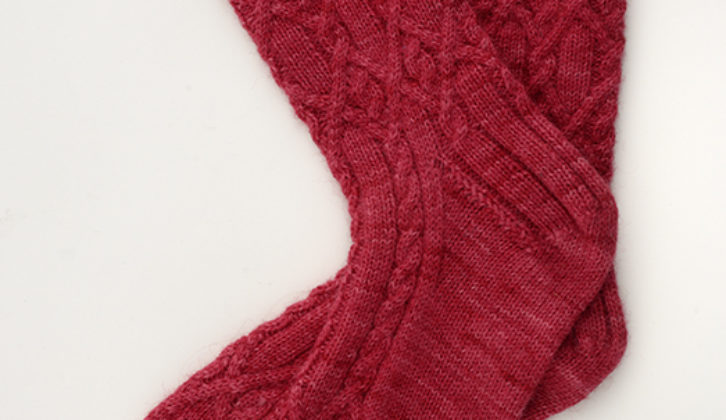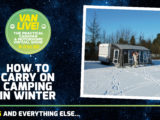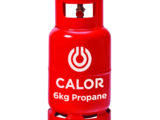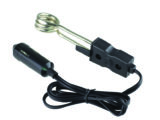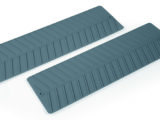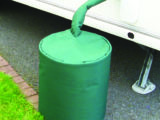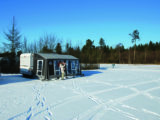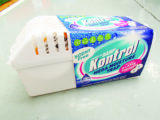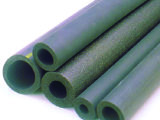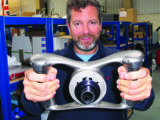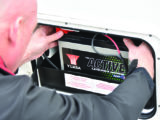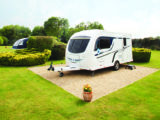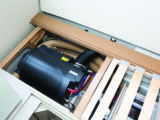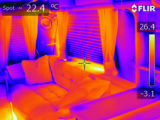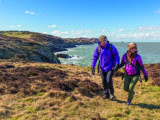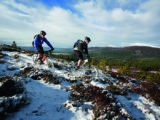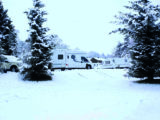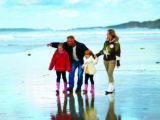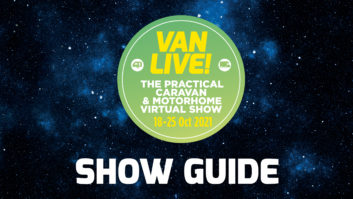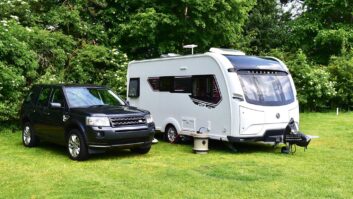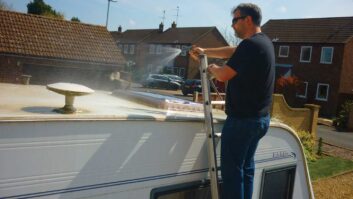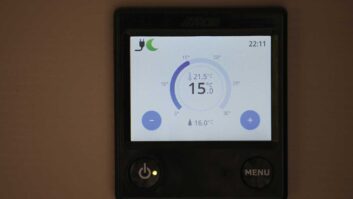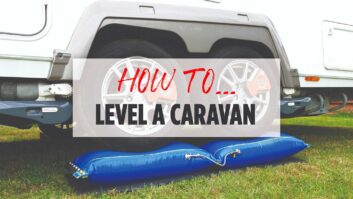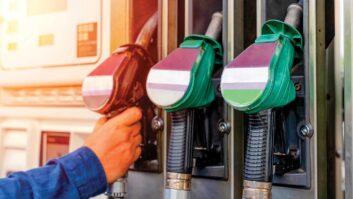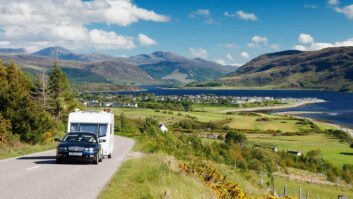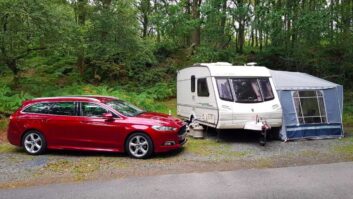YOU NO LONGER need the fortitude of captain Scott to be an all-year-round caravanner. Almost all modern vans have incredible insulation and heroic heating, which make four-season touring not just possible, but a positive pleasure.
There are plenty of benefits to all-year touring, too: sites are emptier (so you get the best pitches and views), popular attractions are quiet, and cold-but-sunny winter days can be unbeatable. Plus, there are all those magnificent Christmas markets and events to savour.
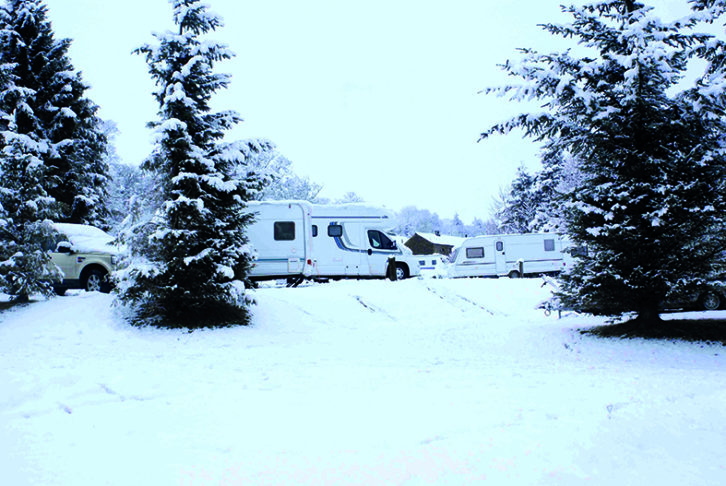
I’ve been winter caravanning since 2011, and the only problem I’ve ever had is being too hot to sleep in the van! Who knew expanded polystyrene was the caravanned’s best friend?
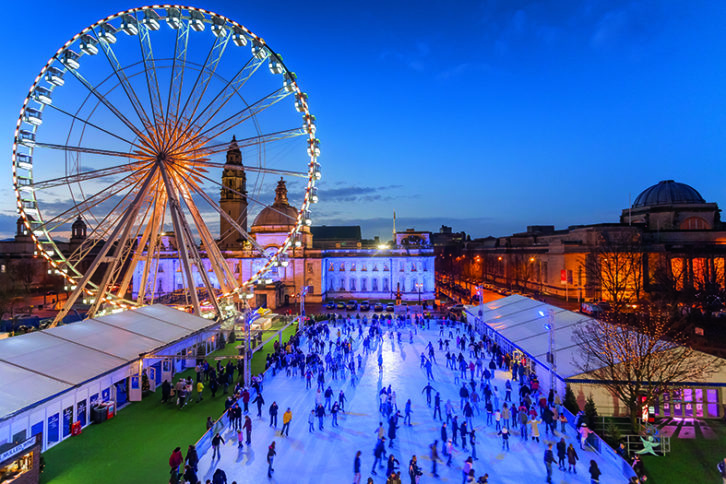
So 2021, and moving into 2022, is the year to ‘max’ your investment and sample that wonderful feeling of being warm and cosy in your van, while the weather does its worst outside. Here’s how…
Pick the right caravan
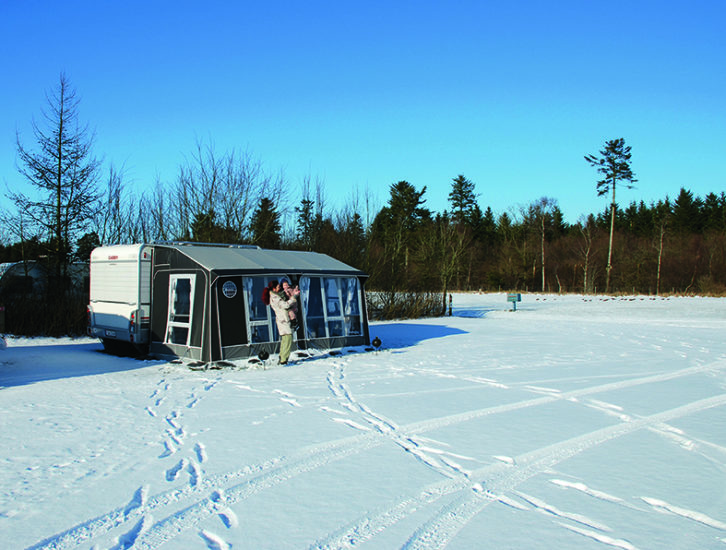
Most caravans are now suitable for all-year touring. Some may reckon German caravans are unbeatable for this purpose, but they come with their own drawbacks, so we suggest you consider every suitably insulated and heated caravan.
Unlike summers spent basking outside the van, from October to April you’ll mostly be inside, so select a caravan with sufficient space to live indoors in comfort. This might preclude tiny two-berths.
If you have kids, one of the many twin-lounge tourers could be a winning choice, so that adults and children have their own spaces.
The extra inches of width you get with an 8ft-wide caravan make a huge difference to the sense of space you feel inside. Check one out and you’ll see what I mean.
Pick a light and airy caravan to make the most of minimal daylight in winter. Modern vans usually feature large windows, and many are also fitted with sizeable rooflights.
Likewise, good ambient lighting, mood lighting and spot lighting can really enhance a caravan interior. Many vans do it brilliantly. It’s a good idea to factor some ‘illuminated thinking’ into your decision.
Insulation
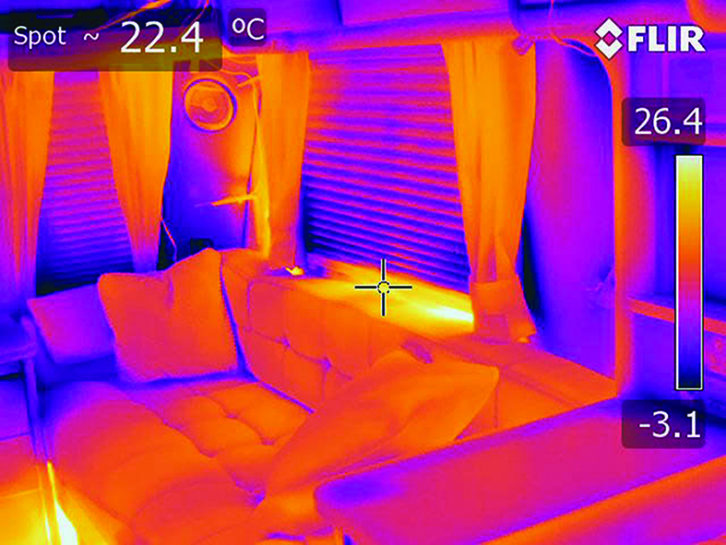
Those who are heading out in the worst weather conditions will benefit from a caravan with Grade 3 insulation. This official accreditation for four-season use is otherwise known as BS EN 1645-1 accreditation.
The NCC manages this accreditation, and all accredited caravans are embossed with an Approved badge. It makes hundreds of British and EU standard compliance checks on leisure vehicles. Part of BS EN 1645-1 accreditation covers thermal insulation.
Each model is chilled to -15°C in a cold chamber. The doors and windows are then closed and the caravan heating turned on. Experts measure the time it takes for the interior to reach 20°C. The power required to keep the internal temperature at 20°C can also be measured.
Most manufacturers include BS EN 1645-1 thermal insulation grading in their technical specs. Some use the phrase ‘Suitable For Four-Season Use’.
From the 1999 model year onwards, caravans that have been built to EU standards received one of three gradings, indicating thermal-insulation and heating performance:
| Grade 1 This rating specifies a minimum degree of insulation, but does not measure the effectiveness of the heating system. There are spring and summer caravans.
Grade 2 This rating requires the same level of insulation as Grade 1, but adds a requirement for a heating system capable of maintaining the interior at 20°C when it is 0°C outside. These caravans may typically be considered for spring, summer and autumn use in the UK. Grade 3 This denotes a higher standard for both insulation and heating. The interior must warm from -15°C to 20°C within four hours and the water system must function within an hour of this. The van must be able to maintain a temperature of 20°C, and the water system must operate when it is -15°C outside. These caravans are stumble for use all year round. |
Caravan sidewalls, floors and roofs are a composite construction. The walls and roof comprise a thin layer of GRP or aluminium on the outside and thin plywood or GRP on the inside.
Sandwiched in between is a thick ‘insulate’ foam core. In a modern Swift caravan, for example, the walls have 25mm of polystyrene foam insulation, while the roof has 32mm. These are light, strong and efficient.
Caravans hold their heat quite well. In (unscientific) testing, a van heated to 20°C at 10pm had dropped to 8°C by 4am, with the outside temperature at 4°C. We advise keeping the heating on low (16°C) throughout the night.
Heating
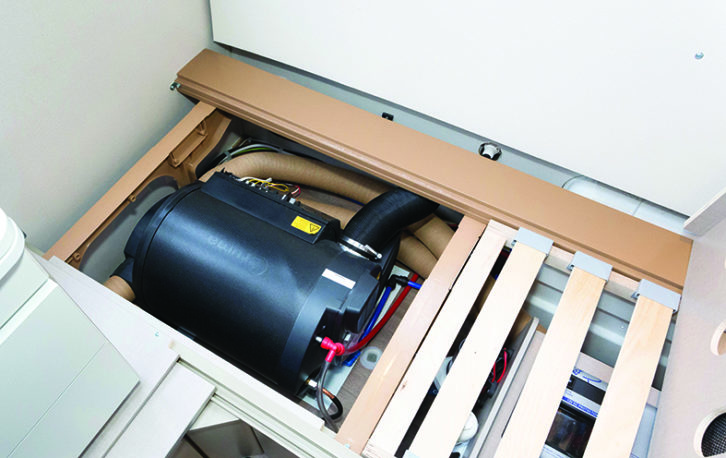
There’s an excellent choice of heating systems in caravans. Most function on gas and electricity, and combine the two for maximum output.
Truma and Whale make blown-air heating systems. These pipe hot air from a heater through ducting and distribute it around the caravan.
Alde, meanwhile, uses a wet system. Like domestic central heating, hot water pumped around the van to radiators hidden behind the furniture warms the interior.
Both systems have their devotees. Some caravanners believe that blown-air heating can leave cold spots around the van, so they prefer the ‘all-encompassing’ heat from the Alde radiator system.
I’ve never found this, and I like the speed with which blown-air can heat a van.
Alde needs more maintenance, has a potential risk of leaking, is heavier and costs more; but it is quieter, and you also get heated towel rails with this system, which is a bonus.
Whale has a clever heater unit, mounted underneath the van to save space.
Winter tourers should check their van doesn’t have exposed heating ducts underneath, because this will greatly affect the performance of the heater in very cold weather. Internal ducting is best and can also be further insulated to raise performance levels.
All three systems also heat the caravan’s hot water and feature LED control panels inside the van.
Cleverly, Truma and Alde systems can also be controlled remotely using an app on a digital device. As long as you can get a Wi-Fi or 4G signal, you can turn the heating or hot water on in the van from anywhere, using Truma’s iNet or Alde’s Smart Control. This way you get back to a lovely warm van, with plenty of hot water for a reviving shower.
Clearly, heating choice is pretty much down to personal preferences, so you might want to research them all, then talk to friends who tour.
Draughts, cold spots
If your van feels draughty, don’t be tempted to block off the drop-out vents in the floor. These are crucial to allow the escape of heavier-than-air propane and butane gases, should you have a leak. Instead, consider insulating the floor areas under the beds and sofas, and in the cupboards, with carpet or some specialist insulation material.
Wheel arches and gas-locker bulkheads are often left uninsulated, and might benefit from additional lagging, too.
Gas choice
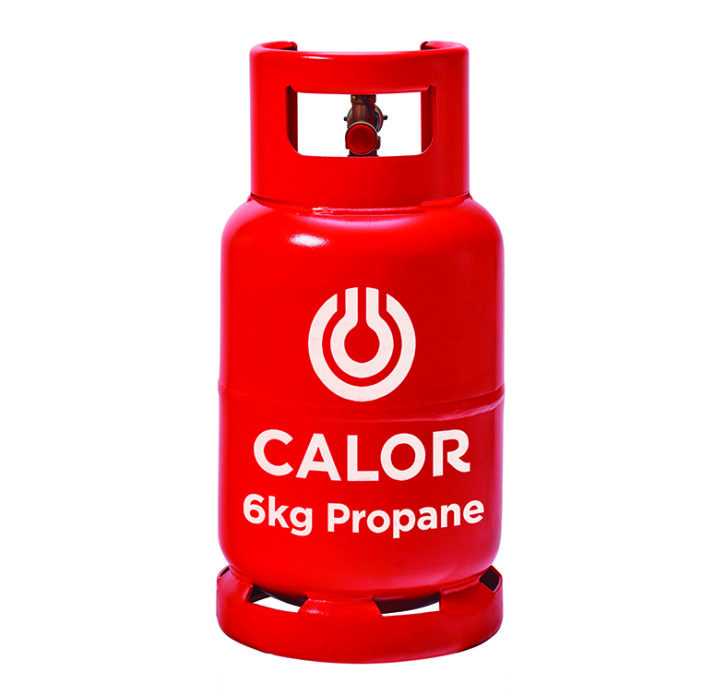
LPG is the most effective source of heat when you are out in your caravan. It delivers up to 6kW of energy, compared with electricity, which achieves 2kW or 3kW, where the site supply allows.
For touring in winter, it’s essential to choose propane gas rather than butane. Propane vaporises (turning from a liquid to a gas) at temperatures down to -42°C, whereas butane stops ‘gassing’ at -2°C.
Calor and Flogas supply propane gas bottles (red in colour), while the refillable specialist, Safefill and Gaslow, use the Autogas bought on many filling station forecourts (including Morrison’s supermarket).
Autogas can be a mix of butane and propane, although in the UK, it is 100% propane all year round. Be mindful that if you refilled your gas bottles abroad in the summer, your gas mix might not be ideal for a UK winter.
Whichever gas you decide to use, don’t underestimate consumption in winter and consider taking a spare bottle along.
Regular winter tourers can make huge savings by purchasing Autogas at 64p per litre, rather than pre-bottled gas at £2 per litre.
Leisure batteries
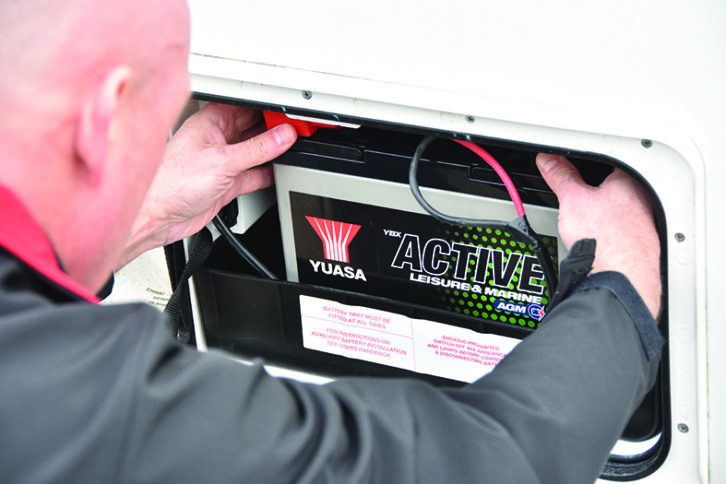
You’ll use more power touring in winter, thanks to lower temperatures, shorter days and more time spent in the van. Low-season caravanners should consider upgrading their leisure battery to allow for this.
A 100Ah leisure battery is ideal, remembering that batteries do not perform as well in cold temperatures.
There’s little point insulating your battery, as it will have no effect during extended cold periods. It might also take it longer to warm back up when the sun comes out.
Shorter winter days and the low sun will make solar panels significantly less effective, too.
Water systems
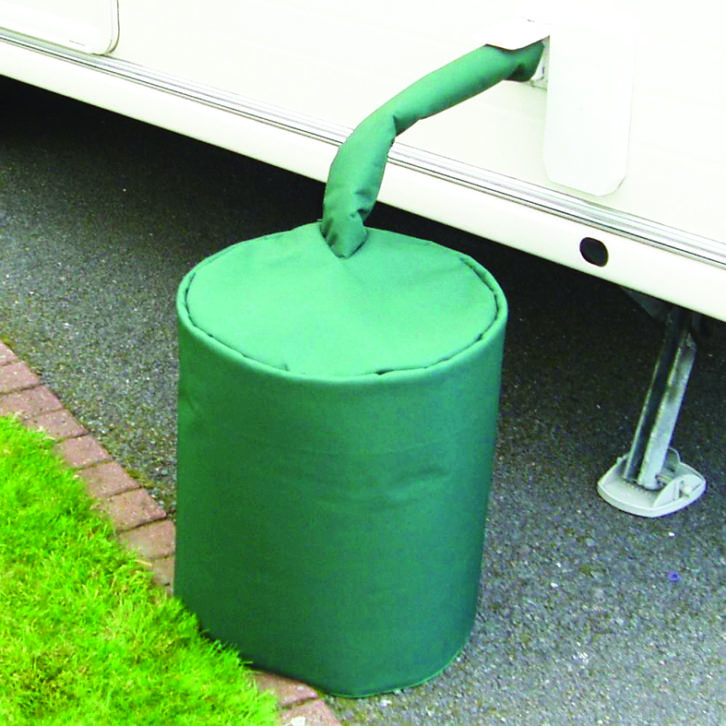
Frozen water and waste pipes are common problems during cold snaps.
Guard against them by protecting your Aquaroll with an insulated cover from the likes of Bags2Cover. These feature a thick, wraparound bag, plus an insulated base and hose cover, and we’ve known them to be effective down to -8°C. Alternatively, simply bring your Aquaroll and submersible pump into the caravan overnight if freezing weather is forecast.
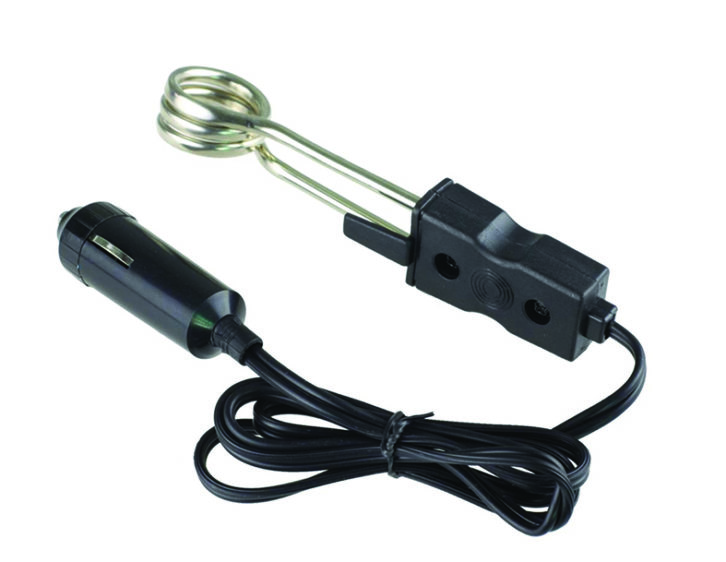
Inboard water tanks can be insulated with pieces of polystyrene, as can any external water and waste pipes, using lengths of split foam, typically used for domestic lagging.
All this aside, we always take a large water canister in the van, filled with drinking water, just in case.
Unfreezing blocked pipes is a nightmare. Pouring hot water down them has limited success, and we’ve resorted to blasting the frozen section of pipe with a hairdryer!
Your Wastemaster can also freeze, so when it’s particularly cold, you might consider using a smaller, shallow container that’s easier to move and de-ice.
Picking a pitch
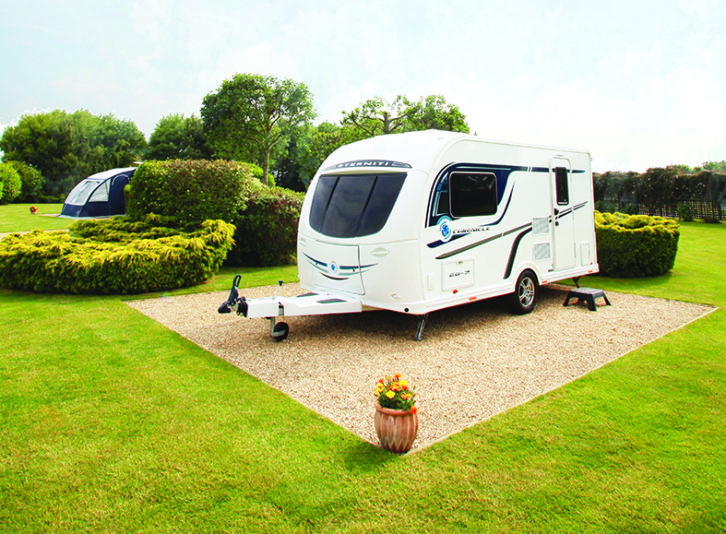
Off-grid camping is possible in winter, but the demands this will put on your gas and electric supplies does make it a more challenging proposition.
When staying on a standard campsite, it’s worth selecting a hardstanding pitch with hook-up. Choose a pitch that’s easily accessible, where ideally you don’t have to drive across grass (universally recognised as the most slippery surface to drive on when wet).
Although a level pitch might not drain well, manoeuvring onto a slope can be tricky. We’ll let you decide!
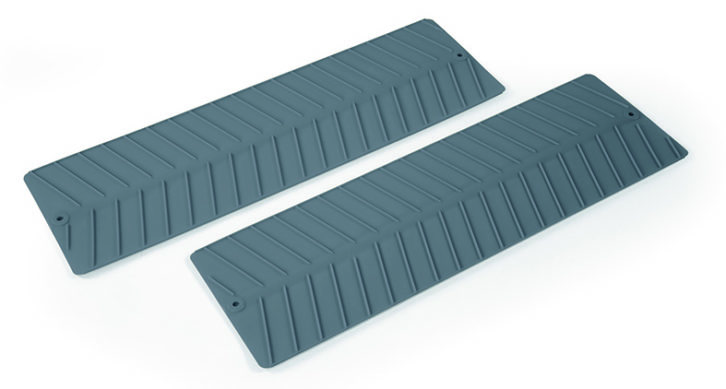
If you park under trees, that brief shower might continue dripping on your roof. There’s also the possibility of damage to the van if any branches are blown off. We’d avoid.
Consider insulating the pitch standpipe tap to prevent freezing. Old thick socks or a golf-club cover work perfectly. Next, lag the downpipe with split-foam lagging. You can remove both when you leave.
Direct-feed water hoses like Truma’s Ultraflow are great in summer, but difficult to lag in winter, owing to their length. An Aquaroll might be a better choice.
Useful accessories
An awning is essential if you tour a lot in winter – especially if you love outdoor pursuits.
Awnings create an ‘airlock’, where you can remove wet gear and dirty boots, without letting all of the heat out. A compact, sturdy air or pole awning can suffice, making sure it is pegged down securely. On a frozen pitch, a cordless drill can be used with a long, 4mm-diameter masonry drill bit to create a guide hole for tent pegs.
Condensation
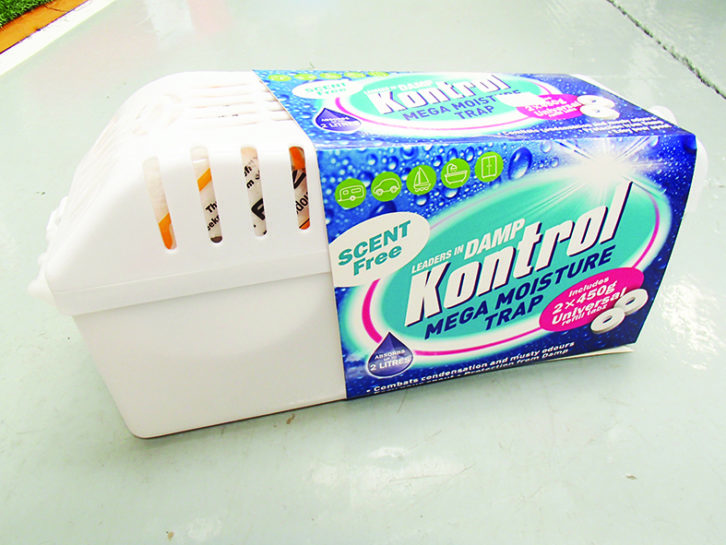
Condensation is less of a problem these days. The key is keeping the van warm and maintaining an airflow. Dehumidifying crystals are fairly ineffective in our experience, while mains-powered dehumidifiers are much better, but expensive, and they need emptying.
Keep a towel handy for mopping windows and ensure your mattress is on a breathable surface – wooden slats, not solid plywood.
TOP TIPS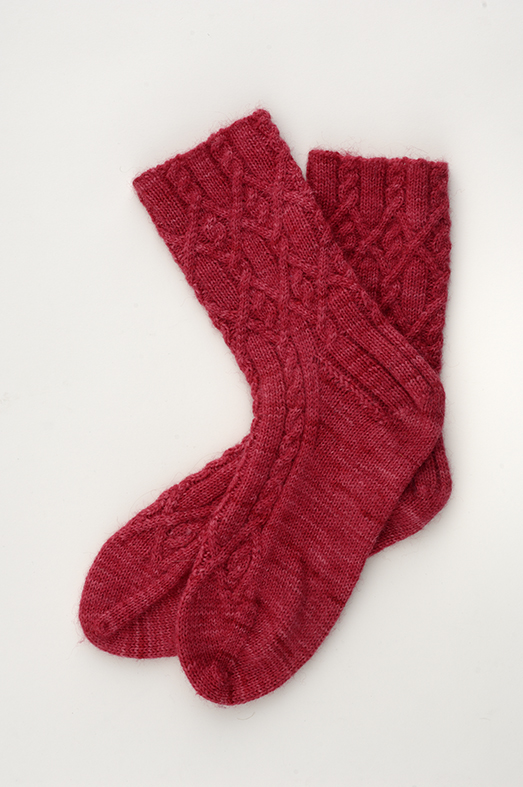
|
You’re in Hall 6 Advice Lounge & Events Theatre at Van Live! See what else is happening on stage, or take me to the Show Guide.
Make 2021 the year to sample the wonderful feeling of being warm and cosy in your van, whatever the weather
